REGENERATIVE MEDICINE FAQs
Find answers to the most frequently asked questions about Regenerative Medicine
What's Regenerative Medicine?
Regenerative medicine involves three practices: Rejuvenation, Replacement, and Regeneration. Rejuvenation means boosting the body’s natural ability to heal itself. Cells and tissues have been shown to be able to remodel and possess abilities to self-heal. Replacement involves the process of extracting the key ingredients to activate the natural healing factors and applying them to areas of the body to decrease inflammation, reduce scarring, and enhance healing.
Regeneration involves delivering specific types of cells or cell products to tissues or organs, where they will ultimately restore tissue and organ function. This can be done through cell-based therapy or by using cell products, such as growth factors originating from placental tissue, Bone marrow, and Regenerative medicine holds the promise of definitive, affordable health care solutions that heal the body from within.
Regenerative Medicine is a branch of translational research in tissue engineering and molecular biology which deals with the “process of replacing, engineering or regenerating human cells, tissues or organs to restore or establish normal function.”
Regenerative Medicine can be described as the process of replacing, renewing, or engineering human cells, tissues, organs and proteins for the purposes of restoring function and health in the body. One of the key components of regenerative medicine is the use of cell replacement strategies which usually requires stem cells.
What are stem cells?
Think of stem cells as the foundation cells for every tissue and organ in the human body. Shortly after fertilization, stem cells started to form. Without stem cells, life cannot be conceived. We continue to rely on stem cells throughout our lives to replace injured tissues and cells lost every day. This includes the replenishing of our skin, hair, blood and the lining of our gut.
The three key properties that make stem cells so exciting in medicine are:
- The ability to self-renew, dividing in a way that makes copies of themselves
- The ability to differentiate, giving rise to the mature types of cells that make up our organs and tissues
- They can give rise to specialized cell types
For more than 50 years, doctors have been using bone marrow transplants to transfer blood stem cells in patients. Now we are using more advanced techniques to collect and inject stem cells in area of the body that are injured.
Imagine pain disappearing and your body being able to heal itself after a stem cell procedure. If you’d like more information, please call us at (949) 933-7012.
Where do stem cells come from?
Pluripotent stem cells are master cells. They’re able to make cells from all three basic body layers, so they can potentially produce any cell or tissue the body needs to repair itself. This “master” property is called pluripotency. Like all stem cells, pluripotent stem cells are also able to self-renew, meaning they can perpetually create more copies of themselves naturally.
There are several types of pluripotent stem cells, including embryonic stem cells. We use the broader term because pluripotent stem cells can come from different sources, and each method creates a cell with slightly different properties.
All stem cells able to differentiate, or mature, into the three primary groups of cells that form a human being:
- Ectoderm — Skin and nervous system
- Endoderm — Gastrointestinal / respiratory tracts, endocrine glands, liver, and pancreas
- Mesoderm —Bone, cartilage, circulatory system, muscles, connective tissue.
Scientists are just beginning to understand the subtle differences between the different kinds of pluripotent stem cells, and studying all of them offers the greatest chance of success in using them to help patients.
For many of our treatments for orthopedics and degenerative spine disorders, we these stem cells to
How long does the procedure for PRP therapy take?
The procedure typically takes a couple of hours, including preparation and recovery time. Performed safely in a medical office, PRP therapy relieves pain without the risks of surgery, general anesthesia, or hospital stays and without a prolonged recovery. In fact, most people return to their jobs or usual activities right after the procedure.
How Often Should the Procedure be Done?
This will be discussed between you and your physician. Up to three injections may be given within a six-month time frame. However, a large number of people gain considerable to complete relief after the first or second injection.
Because the goal of PRP therapy is to resolve pain through healing, it could prove to have lasting results. Initial improvement may be seen within a few weeks, gradually increasing as the healing progresses. Research studies and clinical practice have shown PRP therapy to be very effective at relieving pain and returning patients to their normal lives. Both ultrasound and MRI images have shown definitive tissue repair after PRP therapy, confirming the healing process. The need for surgery can also be greatly reduced by treating injured tissues before the damage progresses and the condition is irreversible.
Where does Newport Regenerative medicine obtain their PRP?
We obtain our Platelet rich plasma from the patient’s own blood in our facility by isolating the healing proteins. After we take the patient’s blood we use a centrifuge to separate the different plasmas in the blood, we isolate the most platelet rich layer that contains the most condensed growth and healing factors. We then use platelet rich plasma to inject into our patient’s areas of treatment.
Where does Newport Regenerative medicine obtain their Stem Cells?
To obtain growth factors from stem cells, we use the only FDA approved stem cells from MiMedx, one of the leading providers of stem cells. The stem cells for their Orthoflo and AmnioFix products are obtained in the delivery room from women who have donated their placenta to after undergoing a cesarean delivery. The stem cells are then carefully processed in the Mimex facility. We believe MiMedx to be one of the innovators in regenerative biomaterials.

